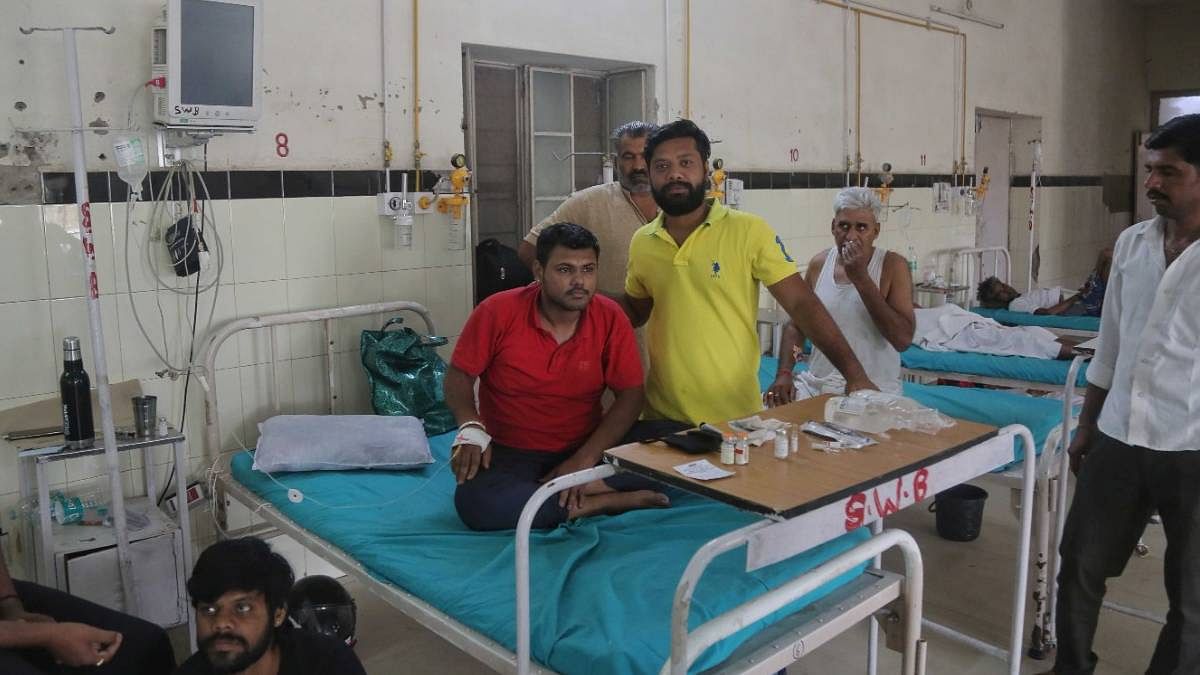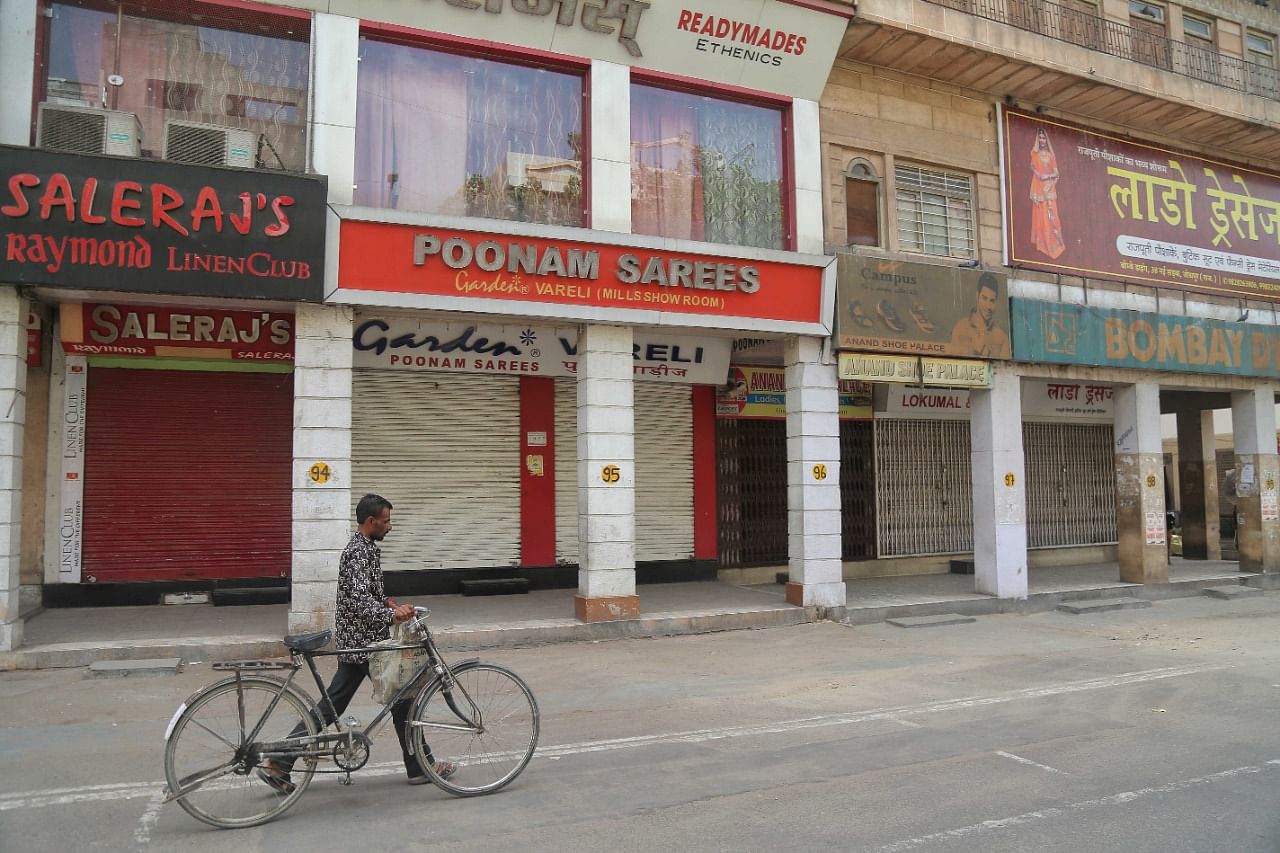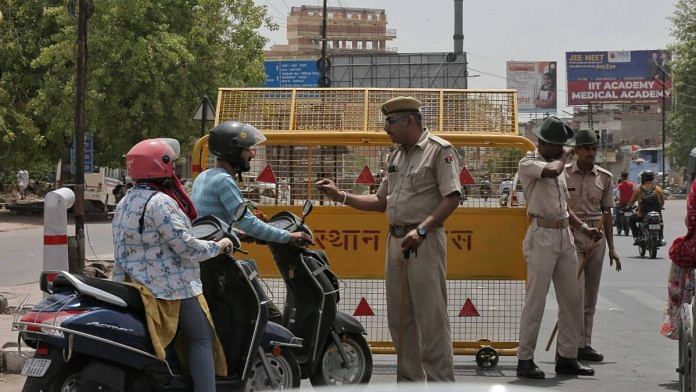Jodhpur: Deepak Singh Parihar, 20, lies flat on his stomach on a hospital bed in Jodhpur Thursday, recovering from a stab wound in his back.
Two of his friends keep him company and supply him with news from around the city. Some time during the day, a visiting relative shows him a CCTV video he claims to have got from the city police.
The two-minute video shows Parihar wearing a saffron shirt and riding pillion on his cousin Lokesh’s motorbike on the morning of Eid-ul-Fitr, 3 May 2022. The two are seen driving past a mob of armed men. Suddenly, a man in a white kurta, his face covered with a scarf, chases after the bike and stabs Parihar in the back.

Parihar is one of 30 people who was left wounded in the violence that rocked Jodhpur between Monday night and Tuesday afternoon.
He was taken to Mathura Das Mathur Hospital, the knife still in his back, his uncle Vijay Parihar told ThePrint. Luckily, the knife didn’t damage any of his organs, the uncle said.
The assailant has yet to be identified, police said.
According to police records, around 150 men have been apprehended so far in connection with the violence.
The situation is now under control, authorities say, but residents fear that the violence will have a lasting impact on the city’s social fabric.
“We have a lot of Muslim friends but I am scared that this incident can permanently sour relations between Hindus and Muslims who have lived in the city for years without dispute,” Parihar, who was one of three people still in hospitals recovering from their wounds Thursday, told ThePrint.
Such doubts and concerns reverberate throughout neighbourhoods affected by the violence.
Two days after the violence, the city’s usually busy roads remain unusually quiet, the arterial roads are barricaded, and markets remain closed. Curfew imposed immediately after violence broke out will continue until Friday.
Also Read: Desire for pan-Hindu identity, hatred for Bangladeshis – Why teens joined Jahangirpuri riots
Uneasy silence
Thursday, as police continued their search in areas where curfew was still in place, the city sat in an uneasy silence.
The police search operations, largely in areas where curfew has been imposed, may be the cause of some anxiety, but what worries residents more is what could come next.
“We’ve never been afraid for our lives before but now it has started to happen,” said Rajbeer Sisodia. His locality, Kabootaro Ka Chowk, was one of those that witnessed the violence. “What we saw Monday and Tuesday was unimaginable. From this point on, it’ll be difficult to forget everything and move on because deep down, we know that the harmony is not real.”
It’s a sentiment that finds an echo on both sides.

“The incident will surely change Hindu-Muslim equations and that will be a problem not just in social but also economic terms,” Wajid Chauhan, a resident of Sonaro Ka Baans, another locality affected by the violence, told ThePrint. “There’s collective anxiety now. Nobody knows how things will change in the days to come.”
According to the 2011 Census, Muslims made up 11 per cent of Jodhpur’s population. Barring a few pockets, most of the neighbourhoods affected by the violence are home to both Hindus and Muslims. This means economic interdependence: From handloom and jewellers to spices, leather, and grain trading, the city’s narrow lanes house both Hindu and Muslim businesses. As a result, traders have both Hindu and Muslim clients as well as employees, residents say.
Although the scale of violence was unprecedented, some residents say it wasn’t entirely surprising given the rising tensions between Hindus and Muslims.
A 25-year-old Muslim engineer from Jalori Gate neighbourhood, who did not want to be named, pointed out how the Jalori Gate roundabout — the epicentre of the Eid violence — had lately begun to be referred to as “Hindu Chowk”, a term he claims that some Hindu groups had made popular.
As ThePrint had reported previously, the chowk was always seen as secular, with both communities putting up decorations for their own festivals. It was decorations at the roundabout, with its bust of freedom fighter Balmukund Bissa, that was at the root of the fight that eventually escalated into violence.
The Jodhpur violence added to a series of Hindu-Muslim clashes in April — in Madhya Pradesh, Gujarat, Jharkhand, West Bengal, Karnataka, Andhra Pradesh, Delhi, Goa, Uttarakhand, and Maharashtra. The recent violence also came less than a month after Hindu-Muslim clashes over a bike rally in Rajasthan’s Karauli left at least 35 wounded.
(Edited by Uttara Ramaswamy)
Also Read: A spat, a human chain formed by cops, sloganeering & a flare-up — what happened in Jahangirpuri



